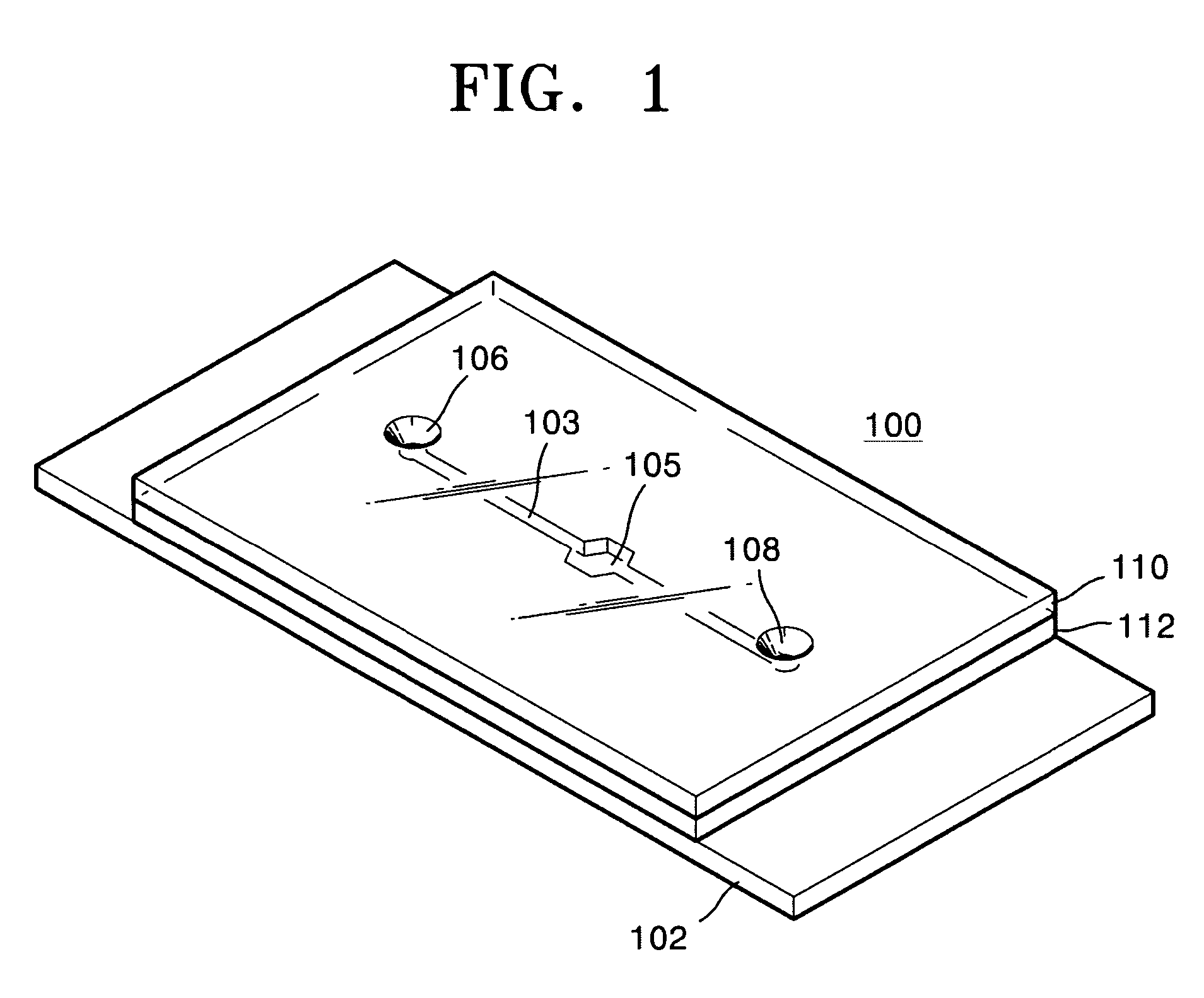Fluorescence detector for detecting microfluid
a fluorescence detector and microfluid technology, applied in the field of microfluidics, can solve the problems of increasing the price of the apparatus, expensive light source having good coherence,
- Summary
- Abstract
- Description
- Claims
- Application Information
AI Technical Summary
Benefits of technology
Problems solved by technology
Method used
Image
Examples
example 1
[0039]In order to monitor PCR amplification of a target DNA encoding hepatitis B virus from an initial concentration of the target DNA in real time, the composition of a master mixture of a PCR for detecting a fluorescent beam is shown in Table 1 below.
[0040]
TABLE 1CompositionFinal concentrationVolume5 × buffer (2.5 × BD, 2.5 mM MgCl2, 1× 5 μl0.2 μg / μl BSA)1 × SYBR (molecular probe)0.15×3.75 μldNTP (10 mM)0.2 mM 0.5 μlDeionized water8.96 μlGenotech primer mix (each 30 pmol / 0.8 μm 1 μlμl, 20 μm)Polymerisation enzyme (Taq pol. 2.5 U / 0.1 U 0.8 μl0.8 μl, UNG 0.3 U / 0.8 μl)DNA plasmid 5 μlTotal volume 25 μl
[0041]1 μl of the PCR solution prepared according to Table 1 was injected to the sample supply hole 106 of the microfluid chip 100 shown in FIG. 1 and introduced in the micro chamber 105 via the microchannel 103.
[0042]Then, the fluorescence detector was arranged against the micro chamber 105 of the microfluid chip 100, and the microheater 102 was heated according to the temperature...
example 2
[0048]When detecting a PCR in real time using SYBR Green I, it is required to make out a melting curve causing DNA denaturation in order to confirm whether the amplified DNA by PCR is a wanted site or not.
[0049]FIG. 5 illustrates a decrease in fluorescence due to DNA melting with the raising of temperature in the microfluid chip, measured using the fluorescence detector.
[0050]As is apparent in FIG. 5, when detecting fluorescence in real time while raising the temperature, depending on the temperature, a double strand of the amplified DNA can become untwisted and converted into a single strand, thereby decreasing the fluorescent signal. Analysis of such signal provides a melting temperature of DNA, thereby determining the length of the double strand of the amplified DNA.
[0051]Experimental conditions for obtaining the melting curve are described in Table 3 below.
[0052]
TABLE 3RetentiontemperatureRetention timeRepeatingStepItem(° C.)(sec)(cycles)MeltingStarting60temperatureStopping90Tem...
PUM
| Property | Measurement | Unit |
|---|---|---|
| volume | aaaaa | aaaaa |
| width | aaaaa | aaaaa |
| wavelength | aaaaa | aaaaa |
Abstract
Description
Claims
Application Information
 Login to View More
Login to View More - R&D
- Intellectual Property
- Life Sciences
- Materials
- Tech Scout
- Unparalleled Data Quality
- Higher Quality Content
- 60% Fewer Hallucinations
Browse by: Latest US Patents, China's latest patents, Technical Efficacy Thesaurus, Application Domain, Technology Topic, Popular Technical Reports.
© 2025 PatSnap. All rights reserved.Legal|Privacy policy|Modern Slavery Act Transparency Statement|Sitemap|About US| Contact US: help@patsnap.com



